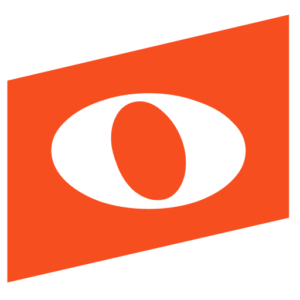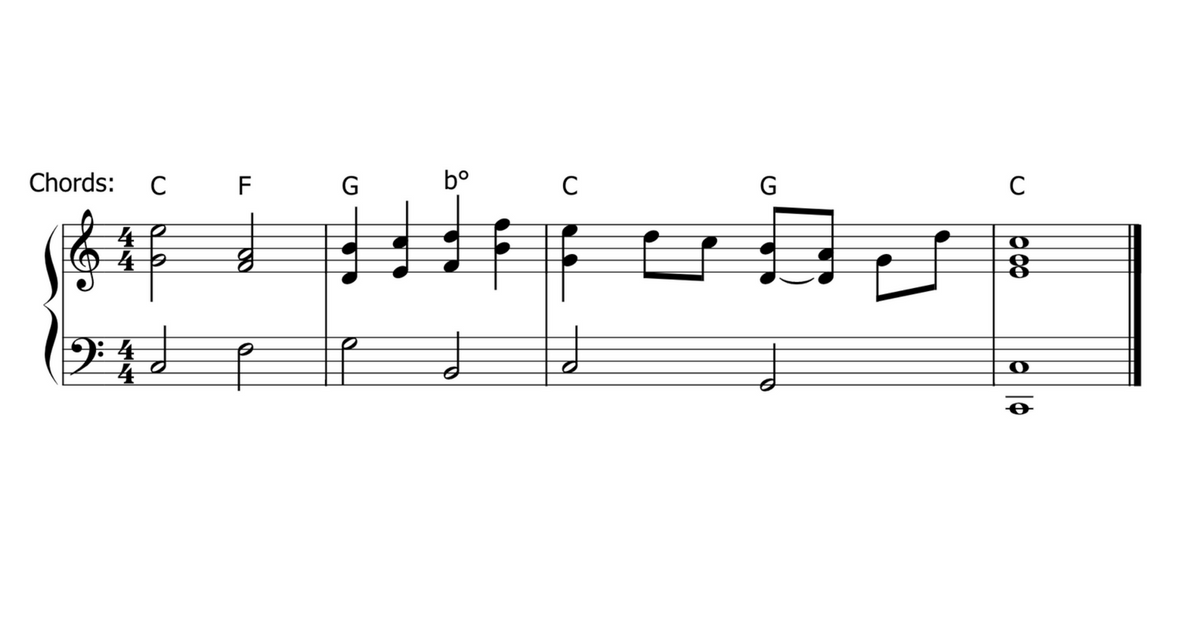This Behind the Notation series focuses on a topic close to the hearts of anyone who likes chords (and that’s everyone, right?). Usually placed above the staff or a set of lyrics, chord symbols are an entire musical language unto themselves. Independent from staff notation but also an important extension of it, chord symbols are a precise shorthand and guide to performance and improvisation.
Anatomy of a Chord Symbol
Let’s start with a quick anatomy lesson: what are the basic parts of a chord symbol?
Study the example and notice the following:
– The foundation of the symbol is a letter of the musical alphabet, A-G: this is the root of the chord: the defining note that gives the chord its name.
– A capital letter by itself means the chord is major: the majorness is implied.
– To make it minor, use a lowercase “m”.
– The superscript provides additional info — in this case that cute little “7” means that it’s a seventh chord.
– The chord symbol does not automatically specify the chord’s inversion, as figured bass numerals do. The examples in this article are written in the basic “stacked thirds” voicing with the root on the bottom, but you can voice the same chord many different ways without needing to reflect that in the chord symbol. That said, you can use the chord symbol to specify what’s happening in the bass… read on below.
The Art of Implication
“But going back to the previous example,” says the alert student of music theory, “how did you know the 7 indicates a minor-seventh B-flat, and not a major-seventh B-natural?” Good point. The 7 by itself implies/assumes a minor seventh only because the minor seventh is so common. Some chords are played so often that putting every little detail into the chord symbol isn’t necessary: for the sake of efficiency and avoiding clutter on the page, music notation often omits certain commonly understood info. Instead, it relies on the background knowledge of the reader to fill in the gaps.
For chord symbols, this also means that a given element of the chord symbol often doesn’t only describe that one aspect — it stands in for aspects of the whole chord such as major or minor. For example, that little “7” doesn’t just imply the added minor seventh above the root (B-flat above C as opposed to B-natural) — it also implies that the triad underneath is major. Why? Because the resulting dominant seventh chord, C-E-G-Bb, is so common that it’s easier just to put “C7” and be done with it. On the less frequent occasions when you need a different type of seventh chord, then you can use the extra ink (or pixels) to be more specific. For example…
…here are some of the most common types of seventh chords and their symbols:
*If you’re wondering about why a B-double-flat is necessary here, check out our article on musical spelling.
Fun with Superscripts
This article isn’t a complete catalog of chord symbols. We just want to point out that you can do a lot with superscripts. It’s not an exact science, but there are certain conventions and common practices musicians use to show deeper levels of detail in a chord. Here are a few examples:
There is some room for creativity, as long as it’s clear what you mean. And be aware of the conventions — consult your favorite chord resource for more options.
The example also brings up a small but important detail: the flat in “flat 5” doesn’t mean “use a flat sign.” It means “lower the note by one chromatic semitone.” Or in non-music theory jargon: “if the note was already a sharp, use a natural to lower it, not a flat”:
9ths, 11ths, and 13ths, Oh My!
In jazz charts you will often see superscript 9, 11, and 13. These are intervals between the root and a note higher than the octave above the root. Again, some of the information is left to the reader to fill in: a simple 9 or 11 usually implies both that the 7th is present, and that the underlying chord is a dominant seventh chord:
But our alert theory student again pipes up: “wait! isn’t a 9th really the same as a 2nd, through the principle of octave equivalence (a D is a D is a D)? So isn’t an 11th much like a fourth?” And we answer, “Yes it is!” But it’s still clearer to use 9, 11, etc:
These examples underline the question of chord voicing: which note is in which octave when it’s actually played on a piano, guitar, or marimba? In general, chord symbols don’t specify: add a D to a C chord, and it gives a certain sound, whether you call it a 2nd or a 9th. At the same time, when you move notes up or down an octave it can change the sound of the chord, perhaps in a subtle way but perhaps more noticeably. Just be sensitive to the meanings in your chord symbol and try to make it as clear as possible.
Bass Notes
Although chord symbols don’t tell you a great deal about chord voicing, you can specify the bass note: a slash “/“ followed by a note name means that this note is played in the bass.
For example:
C/E = E in the bass = C chord in first inversion; C/G = G in the bass = second inversion.
You can also indicate changing chords over a pedal (a held, unchanging note like a drone). This example shows a held C under changing chords:
C… B/C… Bb/C
And you can show bass line progressions such as a descending bassline under chord — here, a held C chord with the bass line moving down by half step:
C… C/B… C/Bb…
Working with Chord Symbols in Noteflight
So that’s a basic primer on chord symbol anatomy. There are great resources out there if you want to explore further, and we encourage you to do so. But if you are reading this, it means you probably use Noteflight, or you have come dangerously close to doing so. And so you’d probably like to know how to work with all these fancy chord symbols in Noteflight.
Creating Chord Symbols
In a nutshell, to make a chord symbol, select a note, click the A7 symbol on the toolbar (or type K as a keyboard shortcut). Then type the chord letter plus any symbols you need, and Noteflight will auto-format it with all the proper things superscripted (is that a word?) and so on. To stack up superscript numbers, separate them with a space. It must be Noteflight’s official “chord symbol” text option — the other kinds of text in Noteflight will not do the job, although some of them, for example Performance text, do auto-format symbols like sharps and flats. In general, the choice of letters or symbols is intuitive: a lowercase b creates a flat sign, the number sign # creates a sharp, = creates a natural, and so on. Use spaces, slashes, and parentheses as needed. To see the string of keyboard characters we used to create each chord symbol in this article, open the Noteflight scores in a separate window (click the white box), make a copy in your account (File menu > Save a Copy), and double click on each symbol. Exact formatting is important, and our User Guide gives a good summary here (note the section on special formatting).
Transposing Chord Symbols
Another handy Noteflight feature is that when you transpose a passage of music (select passage, then Pitch menu, then Transpose – more info here), the chord symbols transpose along with the staff notation, so you don’t have to re-enter them all. It is useful to double check that the symbols are correct in the new key.
In this example the first line repeats a few of the examples above, which are then transposed to other keys:
Notice that the chord spellings may need to use double sharps or flats, but the chord names don’t include those. If you needed to transpose an F-flat chord down a whole step, for example, the chord name should be respelled as D, not Ebb. This is not quite correct music-theory-wise, but Noteflight draws the line there for general ease of reading.
In Conclusion…
This has been a very brief introduction to chord symbols. If you don’t have them in your scores, try adding some! Figure out what the chord is, add the symbol, and maybe solicit some advice on our forums. And study fake books, and song charts in general, to learn deeply the subtle art of chord symbol creation. Remember: usually a lot is implied: your goal should be to get the most information down, in the clearest way you can, with the fewest marks on the page.

